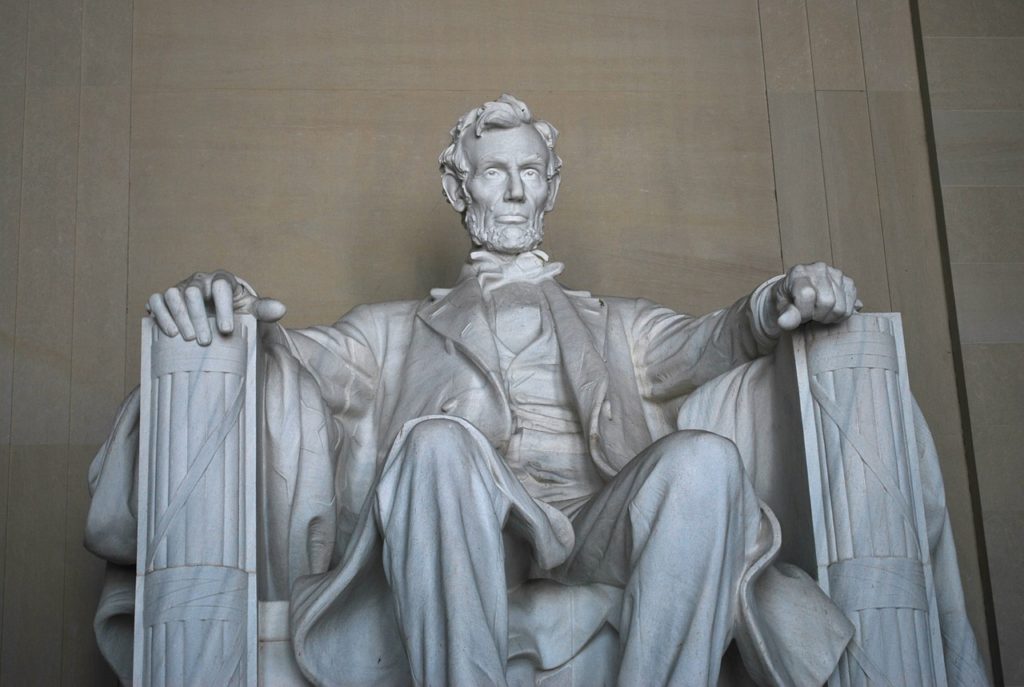The history of the Lincoln Memorial
by Scott Dutfield · 11/10/2020
Why was the 16th president honoured with a memorial that looks like a Greek temple?

Strength, wisdom, fortitude – for many, United States president Abraham Lincoln embodied all those qualities, so when he was brutally assassinated in 1865, plans for a memorial in his honour began immediately. However, years of disagreement over the project meant that construction didn’t commence for nearly 50 years.
The finished temple-like building stands at 30 metres (98 feet) tall, a dominating feature of the nation’s capital, Washington, DC. Architect Henry Bacon drew inspiration for his design from the Parthenon in Athens. He felt it was fitting to honour a man who defended democracy with a structure from the very birthplace of democracy. And the symbolism doesn’t end there. The building’s 36 columns represent the states of the Union at the time of the president’s death, with the entire memorial constructed from stones from different parts of the United States to convey the importance of the Union to Lincoln.
The enormous statue of the man himself was carved from Georgia marble and took four years to complete. It was designed by Daniel Chester French, who studied photographs and eyewitness accounts from the Civil War to get the facial expression just right. The statue sits in the central hall, which is separated from two other chambers by rows of columns. More than just decorative, these provide structural support for the ceiling.
Great care had to be taken to ensure the walls and foundations were strengthened, due to the marshy terrain. The ground had to be drained and filled, and 122 solid concrete piers (cylindrical columns) with steel reinforcements were rooted into the bedrock. Above that is a second series of piers, joined together with concrete arches to form the memorial’s floor. More supports were added when the Lincoln statue doubled in size to 5.79 metres (19 feet).
In 1922 the memorial opened to the public as a shrine, a museum and a place of pilgrimage for millions of visitors.
Murals and meanings
Behind the larger-than-life Lincoln statue are the words, “In this temple, as in the hearts of the people for whom he saved the Union, the memory of Abraham Lincoln is enshrined forever.” Written by New York Herald Tribune art critic Royal Cortissoz, the inscription sums up the purpose of this impressive structure. This is accompanied by inscriptions of two of the president’s most famous speeches on the north and south walls.
The Gettysburg Address was delivered during the American Civil War in 1863 and showed the president’s determination to reunite the nation. The other is the Second Inaugural Address – delivered in 1865 just before the end of the Civil War – which asked people of the Union to show “malice towards none; charity for all.” Above each inscription is a large mural painted by Jules Guérin. They depict the Angel of Truth releasing slaves and joining the hands of two figures in unity respectively. The paint was mixed with kerosene and wax to protect them from the temperature and moisture, preserving them for years to come.
This article was originally published in How It Works issue 121, written by Jodie Tyley
For more science and technology articles, pick up the latest copy of How It Works from all good retailers or from our website now. If you have a tablet or smartphone, you can also download the digital version onto your iOS or Android device. To make sure you never miss an issue of How It Works magazine, subscribe today!





